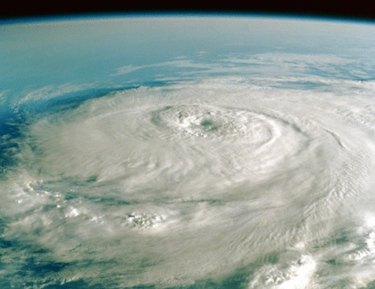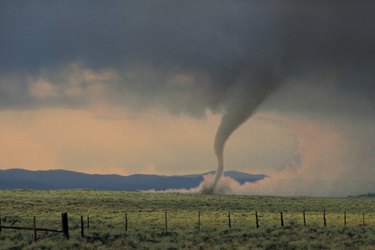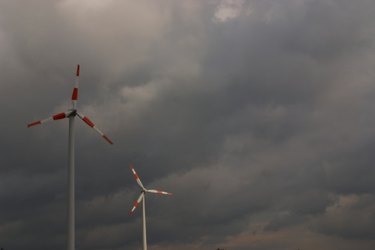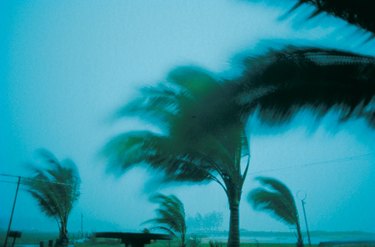
A cyclone is a storm that is quite similar to a hurricane. Cyclones are often thought of in relation to tornadoes, another type of wind storm. However, there are several important differences between cyclones and tornadoes that are important to know if you are living or traveling in areas that are often affected by these types of storms.
Size
Video of the Day

A tornado is smaller than a cyclone, usually with a diameter that spans less than a mile. A cyclone, on the other hand, usually has a diameter that spans hundreds of miles. While a tornado is a single storm system, a cyclone is composed of several storms.
Video of the Day
Speed

While a cyclone is larger, a tornado has faster winds and greater speed. The winds of a tornado can reach more than 300 miles per hour in some cases, whereas the winds of a hurricane peak at 200 miles per hour or less. A tornado usually forms, touches ground and dissipates with greater speed than a cyclone, which usually takes days to form, touch ground and dissipate.
Location

Tornadoes usually occur on land when hot, moist air rises to meet cold air and causes instability, resulting in thunderstorms, high winds and the development of the tornado. Cyclones, on the other hand, always occur over water. They die out shortly after reaching land due to the loss of moisture.
Duration

Cyclones and tornadoes have vastly different durations. The winds of a tornado are driven by a clash of air pressures and temperatures. Eventually, the cooler, drier air overpowers the hotter, moist air and the clash between them dies down. This causes the storm to subside, usually in a matter of minutes. In contrast, a cyclone is so large and vast that the winds do not usually die out for several days.